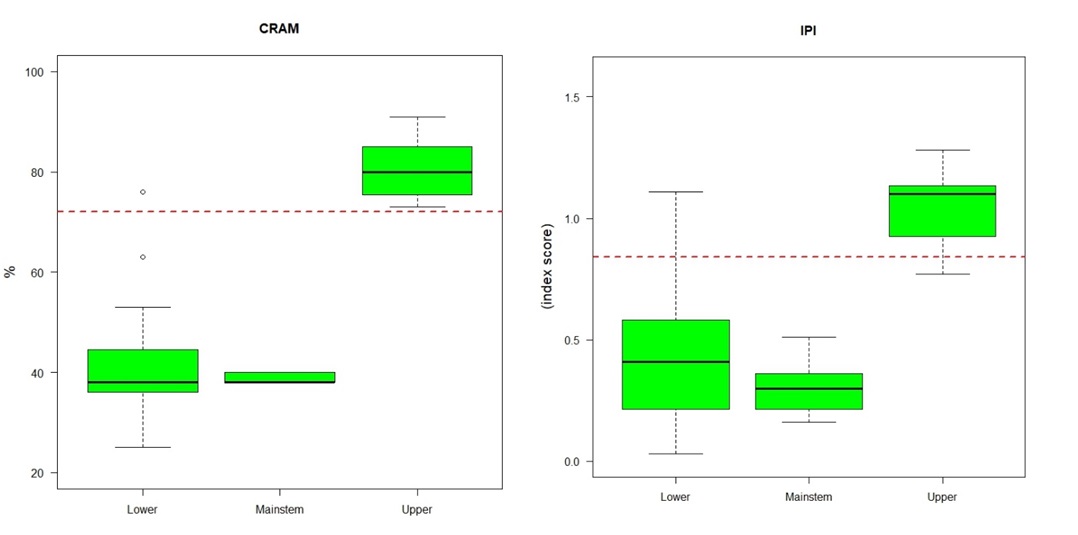The health of stream systems is dependent on the physical habitat condition of their streambeds, banks, and surrounding buffer zones.
As stream bed substrates, bank structure, vegetative canopy cover and natural buffer zones are diminished, it becomes more difficult for healthy biological communities to become established. Human influence plays a key role in the degradation of these
systems through urbanization and channel alteration. Physical habitat condition was assessed using both SWAMP and CRAM protocols:
-
SWAMPs in-stream physical habitat protocol focuses on stream size, substrate type and diversity, diversity of current velocities, canopy shading and channel gradient which are recognized as being among the primary factors that influence the structure and composition of biological assemblages at a given site.
to the Index of Physical Habitat Integrity (IPI) combines the hundreds of data points per sampling location for this protocol into a single index score.
-
The California Rapid Assessment Method (CRAM) provides a method for assessing the riparian zone condition of a stream reach.
Briefly, the CRAM method assesses four attributes of wetland condition: buffer and landscape, hydrologic connectivity, physical structure, and biotic structure.
Each of these attributes is comprised of a number of metrics and sub‐metrics that are evaluated in the field for a prescribed assessment area.
This Physical Habitat Condition link will allow you to explore the physical habitat condition of each region of the San Gabriel watershed by viewing graphs that show the condition category by watershed region for the IPI and CRAM indices.
CRAM scores can range from 0-, (indicating altered biological condition) to 100 (indicating intact biological condition). The four categories presented above were based on the 30th; 10th; and 1st percentiles of CRAM scores at reference sites located throughout California. While these ranges do not represent regulatory thresholds, they provide a useful method for interpreting CSCI results.
-
Collins, J.N., E.D. Stein, M. Sutula, R. Clark, A.E. Fetscher, L. Grenier, C. Grosso, and A.Wiskind. 2008. California Rapid Assessment (CRAM) for Wetlands, v5.0.2. 157 pp. San Francisco Estuary Institute. Oakland, CA.
-
Rehn, A.C., R.D. Mazor and P.R. Ode. 2018. An index to measure the quality of physical habitat in California wadeable streams. SWAMP Technical Memorandum SWAMP-TM-2018-0005.
